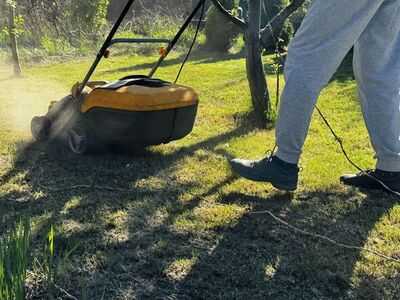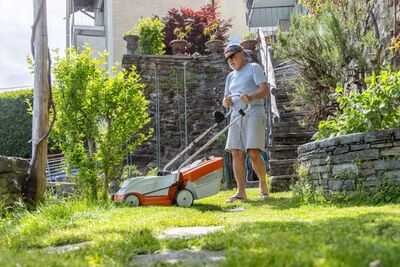It's the age-old gardening question - when is the very best time to do that all-important last lawn mow of the year? Many perhaps have an idea in mind, but most homeowners are unaware that this task is entirely temperature-dependent.
In fact, failing to consider the temperature can lead to waterlogged lawns and long-term damage. Luckily, one gardening expert reveals the exact temperature to stop mowing and a season-by-season guide on all the key but often overlooked tasks.
Working with David Wilson Homes, Lucie Bradley advises that late October or early November is the ideal time to make your final cut. This is when temperatures usually drop below 10C.
Along with a temperature decrease, there's a dramatic slowing down of grass growth during this final quarter of the year. When temperatures drop below 10C, grass typically does not grow, so you don't need to mow as frequently.
She said: "Grass grows best when soil and air temperatures are above 6 degrees Celsius."
In contrast to the colder autumn and winter months, this period typically spans from March to November in the UK.

Essentially, different weather conditions throughout each season affect how quickly grass regrows. Therefore, mowing should be done less frequently as continuing to do so during frosty periods can even significantly damage your lawn: the soil will be compacted and the roots will suffocate.
As well as mowing, this helpful season-by-season guide explains exactly when to carry out key gardening tasks like aerating and scarifying, and exactly why you should be incorporating them into your monthly gardening routine.
Key gardening tasks and exactly when to do them:Spring -
March is the ideal time to give your lawn its first cut of the year, and once temperatures reach above 6C, continue to cut it every two weeks. This helps remove unwanted weeds and promotes denser turf growth.
In addition to mowing, you'll also want to scarify. This is essentially when you remove any moss build-up or thatch. Simply use a metal law rake or scarifier for a larger lawn. This prevents moss and thatch from suffocating the grass, depriving it of nutrients and hindering new growth.
Finally, aerating will allow your lawn to breathe. And it's not as intimidating as it sounds - Lucie advises to simply "use a garden fork or aeration tool to create holes around six inches deep, this helps rainwater drain away and keeps roots healthy."
Summer -
From June, start increasing mowing frequency to once a week, as this is the peak period for grass growth. However, be sure never to cut grass during a drought or heatwave, as this is when plants are under a lot of stress and may not recover from mowing.
You'll also want to keep on top of watering throughout. Simply use all the household water, also known as "grey water," instead of wasteful hose pipes. Mulching also goes a long way in summer - just leave grass clippings on the lawn after mowing to keep the lawn hydrated.
Autumn -
Once it's September, reduce the mowing frequency back to bi-weekly as the grass growth rate begins to slow down. Aim to give the last cut in October or November, of course.
This is also a good time to aerate again, which helps prepare the lawn to drain in the wet and stormy winter months.
Winter -
Apart from reducing mowing frequency, keep on top of any debris. You don't need to worry too much about clearing snow, as it can even be beneficial - helping to insulate your lawn from freezing temperatures.
You may also like

Brits told to sprinkle cayenne pepper in their home in November

Tom Aspinall's huge net worth, very private wife and retirement plans ahead of UFC 321

Indian Ambassador to US extends Diwali greetings to citizens, diaspora (IANS Exclusive)

Prince Archie and Princess Lilibet could make UK appearance for major event

Strictly Come Dancing's Vicky Pattison breaks down in tears as fans left raging







